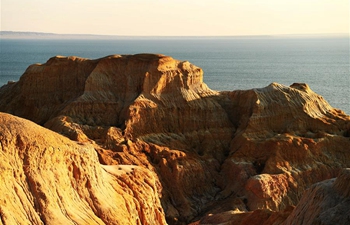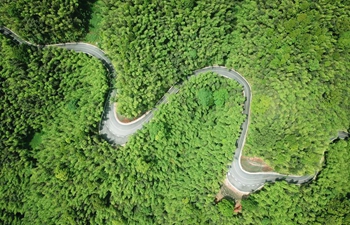NANJING, May 12 (Xinhua) -- A team of paleontologists from China, Britain and Russia recently discovered that the oxygen content changes of the atmosphere and ocean were key factors affecting the Cambrian evolutionary explosion of animals 540 million years ago.
The Cambrian Explosion is a mystery that has puzzled the scientific community since Darwin's time. It refers to the sudden appearance in fossil records of complex animals which were precursors to most modern animals.
It may represent the most important evolutionary event in the history of life on Earth, but the sudden emergence of the complex animals and how they evolved have been unclear.
The research team carried out fieldwork in Siberia, Russia, and collected a precious sample of carbonate rocks, which records the changes of carbon and sulfur isotopes in seawater in the early Cambrian period.
Researchers found that, between 524 million and 514 million years ago, the peak period of the Cambrian Explosion, there were five fluctuations in the content of carbon and sulfur isotopes in seawater.
Further calculation showed that these fluctuations reflected oxygen variations in Earth's atmosphere and seawater during the Cambrian Explosion.
The fluctuations were highly consistent with the changes in animal fossil species in this period. That is to say when the oxygen level increased, the number of animals grew significantly, and while the oxygen content decreased, the animal population greatly declined.
About 512 million years ago, the oxygen level was very low in oceans, and global animal extinction occurred.
The results were published in the journal Nature Geoscience earlier this month.
"The study has demonstrated how oxygen level changes affected the process of the Cambrian Explosion," said Zhu Maoyan, lead author and researcher from the Nanjing Institute of Geology and Palaeontology under the Chinese Academy of Sciences.
Scientists from China's Nanjing University, University of London, University of Leeds, Lancaster University,University of Oxford and Lomonosov Moscow State University also participated in the study.

















